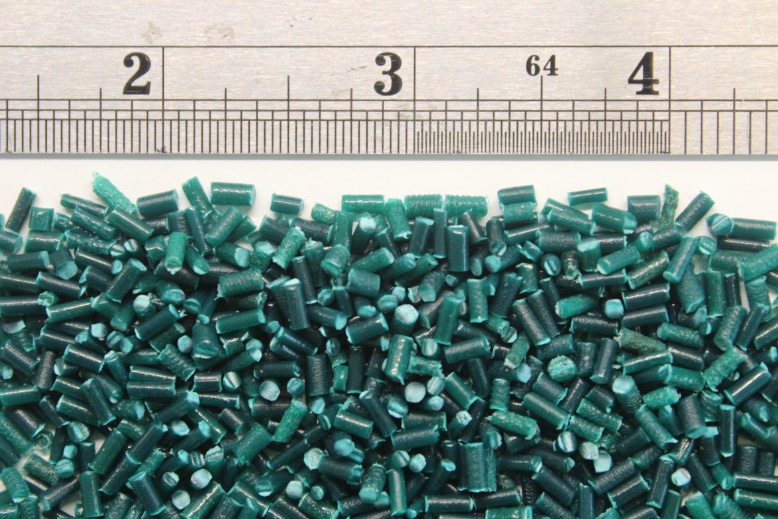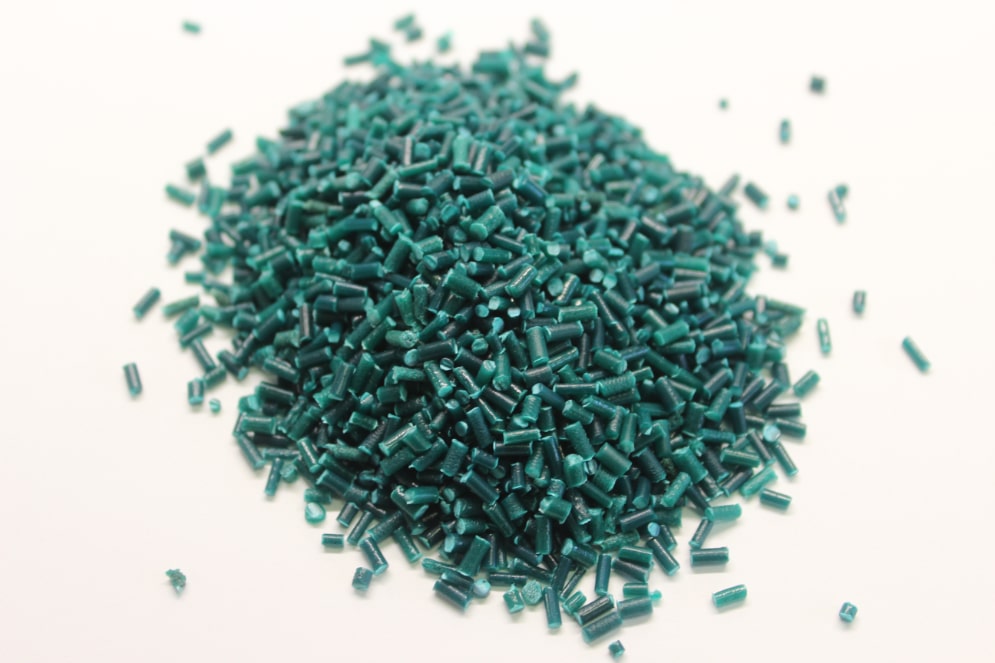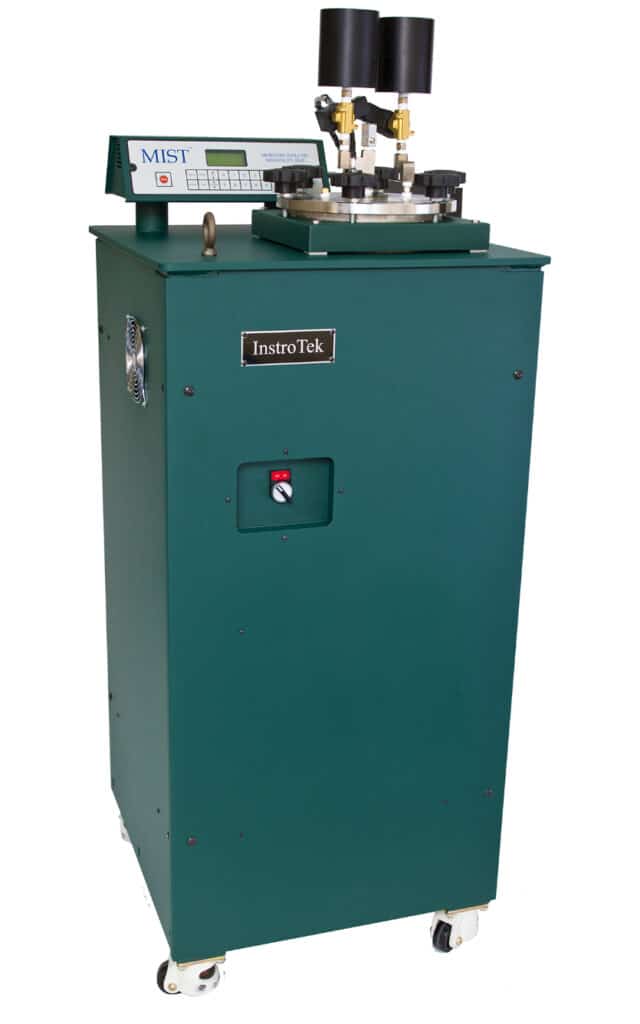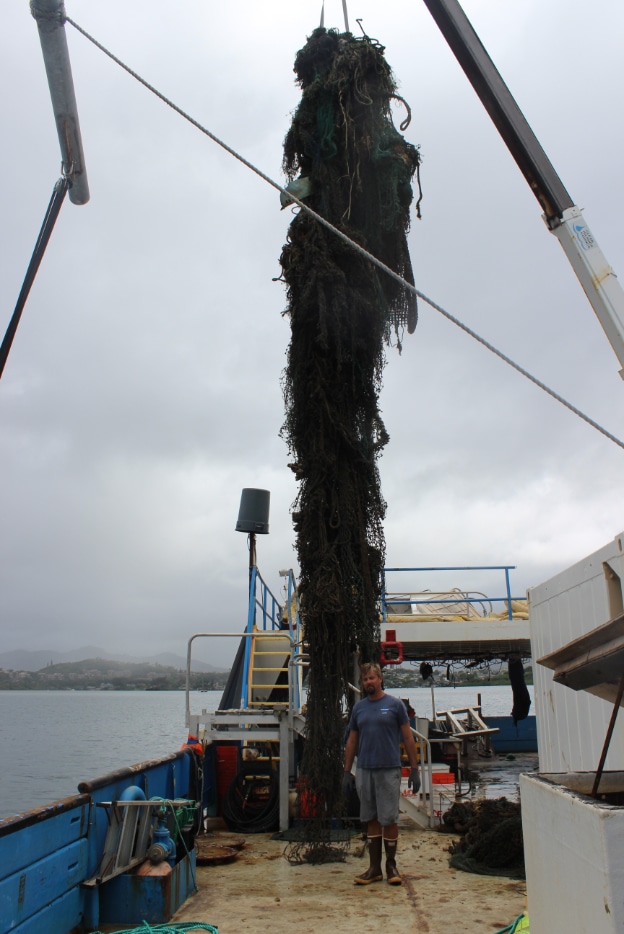Fishnets Capture Plastic Discussion
BY Sandy Lender

As anyone in the asphalt industry will tell you, testing and proving a theory is slow, tedious and often costly. Luckily, there’s a team centered in Hawaii willing to take on the arduous process to pull foreign derelict fishing gear from our oceans and prepare it for positive use in careful asphalt mix design. The members of that team currently include:
- Hawaii Pacific University’s Center for Marine Debris Research (CMDR), led by Jennifer Lynch, PhD. She’s a research biologist with the U.S. Department of Commerce’s National Institute of Standards and Technology (NIST) and the co-director of the CMDR.
- Hawaii Department of Transportation (HDOT)
- AltiSora, of Houston, Texas, where Michael Smith, PhD, is a senior engineering fellow
- University of Hawaii at Manoa’s College of Engineering, where Adrián Ricardo Archilla, PhD, is a professor of Civil and Environmental Engineering and the director of the college’s pavement materials lab (PML).
- Additional companies—such as Grace Pacific LLC, headquartered in Kapolei, performing mix design with Marshall testing—are contributing to a field test of roadway sections with a plastic product by NewRoad.
This article will focus on the concept of fishnets for feedstock and lab testing thereof.
As Lynch pointed out in a presentation to the Hawaii Asphalt Paving Industry (HAPI) audience June 8, “The feedstock is totally different from soda bottles. They have totally different chemical structures.” That means the CMDR team is working to prove the viability of using the plastic waste found within this foreign derelict fishing gear.
Lynch shared that 80% of the net is made of high-density polyethylene (HDPE), making that a good starting point. Getting to the HDPE takes a few steps.

The product in the picture is called AltiBinder, made from high-density polyethylene fishing nets that washed up on the shore in Hawaii. CMDR provided AltiSora with different types of nets, which the lab converted into the high-performance modifier formulation for asphalt. An amount typically around 1% of the asphalt binder is designed to provide improvements in paving performance and durability. Photos courtesy of AltiSora
Thus far, the CMDR derelict fishing gear project has been finding and removing from the ocean these large, tangled masses of nets manually. Teams then measure, disentangle and sample the conglomerate. They test the samples for at least 100 different forensic metrics. They archive the information and reuse the plastic waste. One example of the reuse is their “nets to energy” program where the nets are burned to produce electricity for the city and county of Honolulu. The team has surmised the HDPE nets are a sizeable feedstock for plastic repurposing into Hawaii’s infrastructure, as well.
Proof is in the Labs
Proving this feedstock of HDPE is worthy of asphalt mix design takes a few steps as well. It requires processing, partnership and plenty of testing.
Summer 2021, Lynch shipped samples of the nets to AltiSora in Houston. “Jennifer Lynch sent us several different types of nets, which we have converted into our high-performance additive formulation for asphalt,” Smith said.
He explained that the nets arrived in the condition they were collected from the beach. “Jennifer’s team may have cleaned some of the net samples to some extent, but we believe we have used the nets as found and collected from the beach. We shredded and prepared the nets for compounding and pelletization.”

Using a portion of a $75,000 donation from Hawaii Asphalt Paving Industry member, Bowers + Kubota, Adrián Ricardo Archilla, PhD, purchased the moisture induced stress tester (MIST) from InstroTek for the pavement materials lab at the University of Hawaii College of Engineering. This instrument is designed to facilitate testing for moisture sensitivity by producing stresses and pore pressure in an asphalt sample at elevated temperatures to accelerate the effects that a mix would experience from traffic at normal temperatures and conditions. Photo courtesy of InstroTek
AltiSora blends modifiers with the recovered fishing nets to homogenize the plastic with the asphalt binder and enhance pavement performance. AltiSora’s objective is to improve road performance through the addition of recovered fishing nets, according to Smith.
Then AltiSora’s lab shipped two baggies of pellets, 1 kg each, back to Hawaii for testing in the next lab—Archilla’s PML.
“They were prepared in October 2021 and we received them in November or December,” Archilla recalled. HPU took some samples for chemical analysis and Archilla will perform the Hamburg wheel test for rutting, dynamic modulus testing and the IDEAL-CT. “Some testing will be done with and without MIST testing with the dual purpose of collecting water for testing for microplastics and testing for moisture sensitivity effects on the mechanical response,” Archilla shared. “We will also be working with Jennifer to collect water from the Hamburg to test for microplastics and she will also be collecting water in the field.”
Lynch’s research focuses on understanding marine pollution and its impact on the environment, including the identification and quantification of plastic marine debris and microplastics. Lynch’s team will test the water samples from Archilla’s PML to determine the extent of microplastic and plastic additive leaching from the asphalt test samples.
“Our goal at CMDR is to help find solutions to repurpose plastic into infrastructure, to promote a circular economy, but we do not want these solutions to lead to unintended environmental consequences. Many people are concerned that the roads paved with a tiny percentage of plastic may release microplastics or other chemicals into the environment through stormwater runoff or dust,” Lynch emphasized. She explained that, “Plastic additives are chemicals that were intentionally added to the fish nets to provide them durability, flexibility or flame resistance. Some plastic additive chemicals have been shown to be toxic.” Lynch’s team will help determine if modifying roads with discarded fishing nets will generate additional pollutants in the environment.
Her team has found polycyclic aromatic hydrocarbons (PAHs) in tire particles and road paint in the past and is looking for microplastics from any source. She shared: “PAHs may not come from the asphalt itself but will be found at high levels in roadway runoff because of gasoline and oil leaks on the road. The large concern is that PAHs are carcinogenic, more toxic than the plastic additives. I’m trying to put the compounds that might leach out of the small amount of plastics in the road in context to the other more toxic compounds found in roadway stormwater runoff (regardless of source).”
For additional information on a recent leaching study regarding reclaimed asphalt pavement (RAP), see the study posted Feb. 10, 2021, from the Department of Environmental Engineering Sciences at University of Florida, Gainesville.
For Archilla, his focus will be mechanical testing. “We have sufficient plastic from AltiSora to produce multiple batches,” he shared. “We will add these plastic pellets to an unmodified PG64-16 and a polymer modified PG76-22 (or PG64E-22) at 1% by weight of binder. We will also measure the viscosity of those binders on samples with and without the addition of plastics; and for those with plastics, we will take samples from the top and bottom of the container after stopping the blending to see if there are significant differences.”
Archilla also shared temperature information, in the event producers or DOTs would like to consider the use of this recycled waste plastic within the warm-mix asphalt (WMA) discussion. “The mixes with AltiBinder will be tested in the lab only. We plan to use mixing temperatures that Grace Pacific has used in their mix designs for the actual field mixes that will be used in the pilot project. We will double-check their adequacy for the binder with AltiBinder plastics based on the viscosity measurements we will perform on the Brookfield viscometer. The temperatures used in the mix designs are 295°F for the PG64-16 and 325°F for the PMA….Given that the melting point of the HDPE is around 131°C, or 267°F, there seems to be some room, but not a lot of wiggle room, to lower the temperature for WMA.”

Volunteers and members of CMDR pull derelict fishing gear out of the water for next steps. Photo courtesy of Lynch and CMDR
Protecting Performance
“Our #1 goal is road performance,” Smith said. “The road’s properties must improve when adding the recovered nets or any waste plastic. We are looking for a win-win. We want to improve our nation’s roads and help the environment. Adding plastic like the high-density polyethylene found in nets can improve some road properties, but not all. The objective of our modifier is to help the waste plastic improve roads. The modifier helps with homogenization and processing, but one of its key objectives is to help the plastic further improve binder properties like rutting and cracking.”
Scale Up
Lynch’s presentation to HAPI showed the multiple challenges CMDR is up against. As mentioned early on, proving a hypothesis can be costly and that can factor into a timeline for even the most motivated of partnerships. Archilla shared that HDOT is the source of funding for performing the tests via his lab, “though it is actually 80% FHWA and 20% state funds.”
Funding is only half the battle. Not only is derelict fishing gear choking the ocean, presenting enormous conglomerates of sea turtle and coral reef killing messes, but it is also difficult to move once it’s found. The CMDR team is developing a program to detect and remove marine debris that involves satellite monitoring, vessels with towing and crane capabilities, and people willing to help.
“Jenn and beach clean-up volunteers have done a lot of work collecting and sorting the nets,” Smith pointed out. “There have been a lot of hours spent doing this. In the long term, a more efficient automated processing system is needed. Additionally, the long-term solution needs to ensure the product design accommodates net mixture types.”
How We Can Incorporate Recycled Plastics in Asphalt Pavement
The team is also developing a network to transport, store, disentangle, polymer-identify and sort marine debris that involves trucks, containers, warehouses, hoists, forklifts, shredders, chemistry equipment, and, again, people willing to help.
The team is looking for a way to fund a facility on Hawaii that can convert material to product for improving road performance.
“Economies of scale have a significant role in plastic recycling,” Smith said. “Today’s typical recycling equipment is extensive. It either requires a lot of manual labor or automation that increases cost. Standard full-scale recycling equipment should be able to meet Hawaii’s needs. There will be excess shredding and manufacturing capacity. Ideally, I would like to see an additional recycling application developed for Hawaii to fill out that excess capacity. Hawaii as an island is challenged, so this is a great opportunity. Landfilling nets, importation of raw materials and road construction are exceptionally costly in Hawaii. We believe our solution is an elegant one to address waste management, raw materials and paving durability.”
And as you’ve seen in this article, the CMDR team is in the process of testing and proving this specific marine debris can be turned into a product for use in pavement designs. That involves all the moving pieces discussed herein.
For more information on the CMDR’s efforts, please reach out to Jennifer Lynch at cmdr@hpu.edu.
